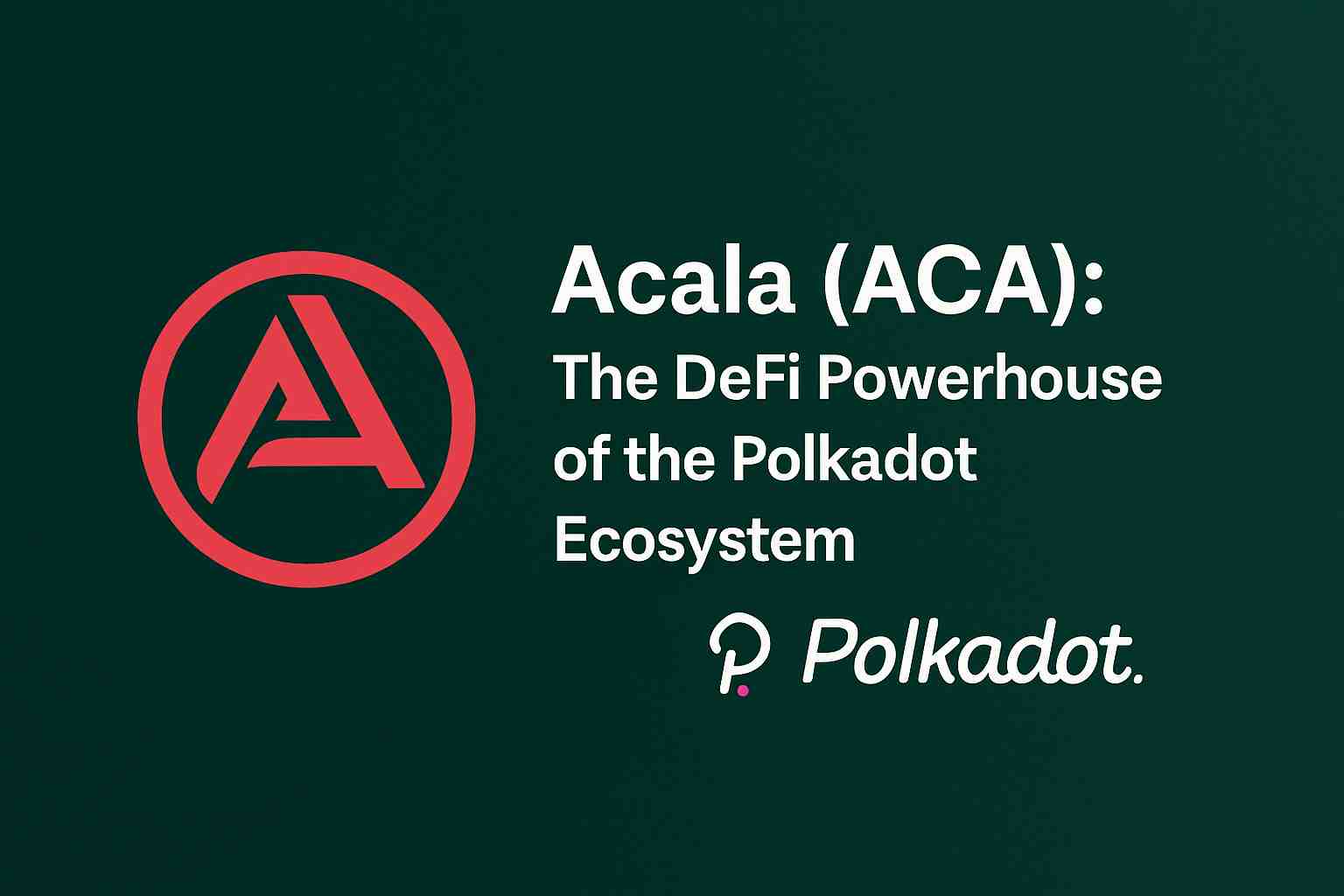As decentralized finance (DeFi) continues to reshape the financial landscape, Acala (ACA) emerges as a leading player on the Polkadot network. Built to serve as the foundational DeFi hub for Polkadot, Acala combines a suite of robust financial tools with cross-chain capabilities, making it one of the most promising parachains in the ecosystem.
Table of Contents
ToggleWhat is Acala (ACA)?
Acala is a next-generation decentralized finance platform designed to offer a full-stack DeFi experience within the Polkadot network. The platform leverages custom blockchain functionality, seamless interoperability, and on-chain governance to deliver a scalable and efficient DeFi environment.
At the heart of Acala’s ecosystem lies its native token, ACA, which fuels a wide range of utilities—from paying network fees to participating in governance and liquidity provisioning.
Key Features of Acala
1. aUSD Acala’s Native Stablecoin
One of Acala’s standout features is aUSD, a decentralized multi-collateral stablecoin pegged to the US dollar. Users can mint aUSD by locking up DOT or other supported assets, enabling them to access liquidity without selling their long-term holdings.
2. Liquid Staking with LDOT
Acala offers liquid staking, allowing users to stake their DOT tokens while still maintaining liquidity. When you stake DOT through Acala, you receive LDOT, a liquid version of staked DOT that can be used across DeFi applications.
3. Cross-Chain DeFi Integration
Built on Substrate and integrated into Polkadot, Acala supports cross-chain asset transfers, expanding its reach beyond a single chain. This enables users to tap into a wide range of DeFi tools across multiple blockchains in a secure and efficient manner.
4. Decentralized Governance
ACA token holders have full control over the future of the platform through a transparent on-chain governance model. Proposals and upgrades are decided by community vote. Ensuring a decentralized development process.
Why Acala Matters in the DeFi Space
Acala is more than just another DeFi platform. It’s designed to be Polkadot’s financial layer, offering foundational tools like a stablecoin system, staking derivatives, and decentralized exchanges (DEXs). Its combination of security, scalability, and user-focused innovation positions it as a game-changer in the crypto space.
For example, projects exploring compliant blockchain frameworks like Metal Blockchain can draw inspiration from Acala’s model of transparent governance and regulatory readiness within DeFi.
Future Outlook of ACA Token
The ACA token plays a vital role in maintaining network stability and incentivizing participants. With increasing adoption of aUSD, demand for ACA is likely to grow as more users seek to participate in staking, governance, and liquidity mining.
As Polkadot expands its ecosystem and parachain auctions gain momentum, Acala is expected to maintain a dominant position among the top DeFi projects.
Conclusion
Acala (ACA) is redefining decentralized finance by offering a stable, interoperable, and scalable solution built on Polkadot. Whether you’re looking to mint stablecoins, stake DOT with liquidity, or explore cross-chain DeFi protocols, Acala provides the infrastructure and tools to thrive.
As the crypto landscape evolves, platforms like Acala will be key to unlocking the full potential of decentralized finance in a multi-chain future.
FAQs of Acala (ACA): The DeFi Powerhouse of the Polkadot Ecosystem
1. What is Acala (ACA) and how does it work?
It provides core DeFi services like stablecoin issuance (aUSD), liquid DOT staking (LDOT), and cross-chain asset transfers, all powered by its native token ACA.
2. What is the role of the ACA token in the Acala ecosystem?
ACA holders can vote on proposals, participate in protocol upgrades, and help shape the future direction of the Acala platform.
3. How does Acala support cross-chain DeFi integration?
As a Polkadot parachain, Acala enables secure and scalable cross-chain interactions with other parachains and external blockchains. This allows users to move assets and access DeFi services across different networks from one unified platform.
